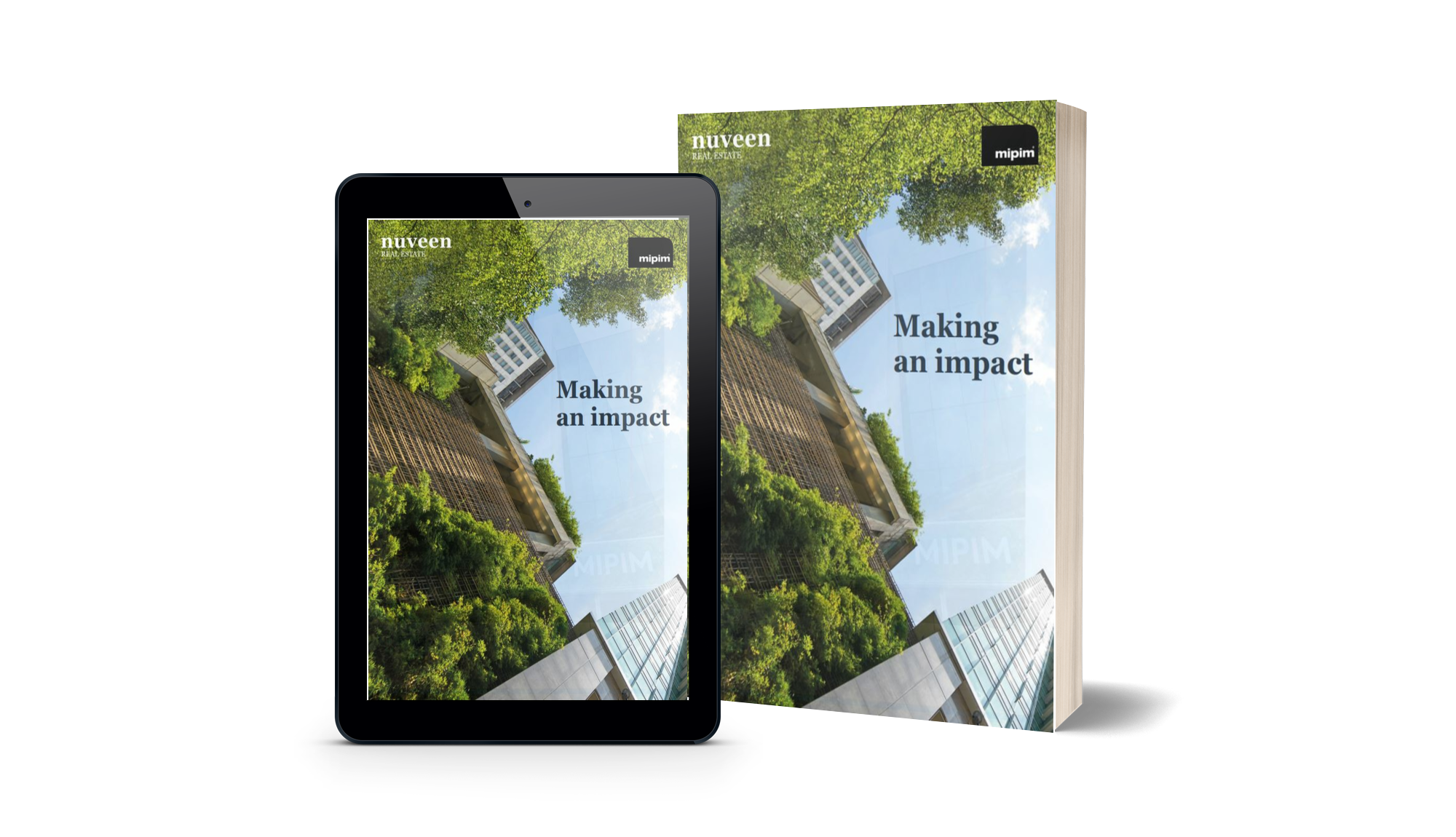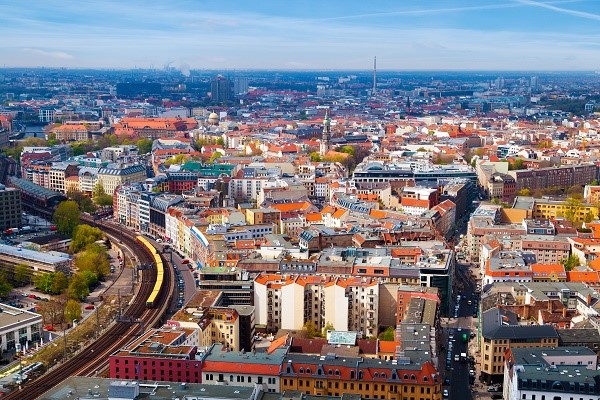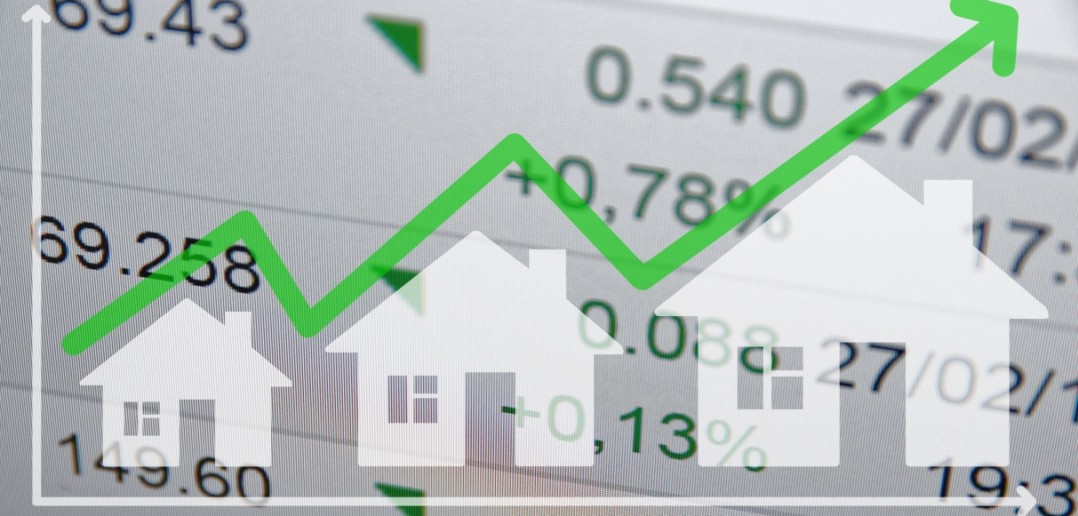How to invest in overseas commercial property
“Don’t put all your eggs in one basket.” This idiom is broadly recognized as one of the golden rules of investment – and especially when you want to invest in overseas markets. It can also have an endless array of different meanings. When it comes to international real estate investment, I propose the following interpretation: If you want to strike an optimal yield-to-risk balance, split your eggs between two baskets: rental properties (70%) and value-added projects (30%).

"Making an impact"- White paper
Successful impact investing in real estate
Basket 1: Rental properties
As a new commercial property investor, you would do well to distribute the majority of your investment capital into low-risk projects such as rental properties. Ideally, you will invest in a rental property with annual yields that exceed your mortgage payments (loan interest plus principal). By investing in a property with annual yields of 4-5%, you should have no trouble preventing your cash flow from going into the negative. As an investor, your goal in this scenario is to maintain your capital wealth while achieving two additional goals: outpacing inflation and, in the long term, creating a family wealth fund.
Two types of property are particularly promising in terms of capital maintenance: residential property in large cities and retail space on busy pedestrian streets. However, both property types have drawbacks.
First of all, both offer relatively low average yields of 2-3% in today’s market.
Second, the prices of flats and retail space can be daunting for investors and occupants alike in the best districts of large cities.
There’s good news though for savvy investors: Micro-apartments, or small flats with just enough space to cover all of the bare essentials, offer the investment benefits of ordinary flats in large cities, often at significantly lower costs than their full-sized counterparts.
Across Europe, the populations of large cities are expanding by an average of 1.5% per year. This is primarily attributable to people from smaller towns moving to major metropolises in search of better employment opportunities.
In Germany, micro-apartments are geared specifically toward this segment of the population. The typical German micro-apartment averages 20-30 sq m and contains all the core essentials – a bathroom, a kitchenette, a table and a bed. Many German micro-apartment tenants live in these facilities during the work week, and spend their weekends at their homes outside of the big city. Micro-apartments have also proven popular among students and young professionals who have not yet started families. Lease periods are typically shorter than those of full-sized apartments, with many lease agreements stipulating terms of three to six months.
A micro-apartment can be an excellent investment. Their diminutive size on one hand enables owners to rent them out for relatively high sums per square meter, and on the other attracts tenants looking for lower rental costs than they could find in full-sized apartments.
Across Germany, micro-apartments rent for an average of €400 per month, and usher in yields of 4-5%. The liquidity of micro-apartments will only increase as urban populations continue to grow.
Meanwhile, micro-apartments are relatively easy to manage. First of all, as mentioned above, lease agreements are typically signed for periods of three to six months, and as with standard apartments, they generally stipulate a security deposit. These factors reduce the likelihood of an investor winding up in an eviction battle with an unsavory tenant.
And for those investors that would prefer to take a completely hands-off approach to renting out their real estate, plenty of property management companies are available to handle the dirty work. Property managers can find and replace tenants, resolve maintenance issues, do repair work and deal directly with tenants on your behalf in order to resolve any problems that may crop up.

Germany is an ideal destination for investing in micro-apartments; the loans in this country are some of the most affordable in the world Photo: SOMATUSCANI / Depositphotos
For those wishing to cash in on this investment trend, Germany is a great place to start, due largely to the fact that German loans are some of the most affordable in the world. The cost of financing is a crucial consideration when putting capital into a simple rental business. In Germany, non-resident investors can get a 50% LTV mortgage at less than 2% per annum (fixed rate) for 10-20 years. Cheap financing acts as leverage, increasing the returns on the investment. The loan interest is spent in this case, reducing the investor’s tax base.
Other advanced economies – such as those of Austria, the United Kingdom, the United States and Switzerland — are also good for capital maintenance. However, for non-residents, financing is expensive in the United Kingdom and the United States. And although in Austria and Switzerland loans are cheap, high-quality properties yielding 4−5% are relatively difficult to find there, as these countries are small and the local investors are quick to scoop up the best properties as they enter the market. In addition, these two countries have territorial restrictions for foreign property buyers. In contrast, the German market is relatively large, thus boosting investors’ prospects of securing choice properties. Furthermore, the Austrian and Swiss markets have demonstrated slower growth than the German one in recent years.

"Making an impact"- White paper
Successful impact investing in real estate
Basket 2: Value-added projects
Of the capital you wish to invest, I recommend setting aside 30% for comparatively complex value-added projects. This strategy can be summed up in three words: buy; repair; sell. In other words, the investor purchases a home, office or hotel in poor condition, fixes it up so as to increases its value, and then – ideally – sells the property at a profit.
This type of investment is more complex than the rental investment process described above due to a plethora of associated risks. Any number of things can go wrong with value-added projects, including but not limited to: budget deficits, the myriad difficulties associated with obtaining all of the permits one needs to revamp downtrodden properties, underestimated purchase prices, overestimated selling prices and the prospect of the property sitting on the market for ages without a buyer.
Moreover, whereas with rental properties investors can hire property management companies and then sit back and relax, value-added investments require active involvement on the part of the investor. It also helps if the investor has some experience in the construction business.
But all of the risks associated with value-added investments will be worth it to savvy individuals looking to turn a solid profit: successful redevelopment projects regularly earn investors returns in the vicinity of 12-20%.
Another advantage is that investors have negotiating power when purchasing fixer-uppers; they can easily argue that the list price should be reduced in order to accommodate the many repairs that need to be made.
When investing in value-added projects, there are several steps you can take to boost your yields:
- Hire a team of professionals to manage the renovation process on site. This is particularly crucial if you aren’t located in close proximity to the property; such projects are practically impossible to carry out remotely.
- Do your due diligence and invest in markets with strong price-growth potential.
- Invest in properties that you can sell in the foreseeable future and at a good price.
- Structure your transaction with tax optimization in mind. You could save big by working with a good local lawyer who knows the ins and outs of the relevant tax regulations. For instance, many investors could avoid paying transfer taxes by purchasing their investment properties via a company rather than in their own name.
- Take out a mortgage loan. Bank financing reduces the need for the owner´s equity, creates a leverage effect and increases yields. At present, mortgage loan interest rates across Europe tend to hover between 2-3%.
At the moment, Spain is an excellent choice for anyone wishing to invest in value-added projects. The country’s housing market was hit hard by the global financial, but after seven years in a free fall, housing prices took a turn in 2014 and have been on the rise ever since. The county’s recession is in the past and the property market seems to be on the road to a full recovery. As Spain’s economic situation continues to improve, so too does consumer confidence. Meanwhile, with unemployment rates falling and construction volumes surging, Spanish banks have displayed an increased willingness to provide mortgage loans.
At present, property prices are still an average of 45% lower than they were during their 2007 peak, put prices are quickly picking up. As such, the market is ripe for value-added investors wishing to buy a property at a relative bargain, fix it up and then sell it a few years down the line.
In particular, Barcelona is replete with redevelopment opportunities due to its shortage of newly built residential properties. Value-added investors in the Catalonian capital have found great success in purchasing homes and multi-unit complexes such as student apartments, fixing them up and then reselling them. The potential for price growth is particularly high in this city; residential property prices have already soared by some 7% over the course of 2016.
Madrid also offers some excellent value-added construction opportunities due to a lack of quality offers in the office space segment.

Spain has overcome its lengthy recession, the economic situation is improving, and banks have displayed an increasing willingness to provide mortgage loans. Photo: Ivantagan / Depositphotos
I encourage you to take the 70%/30% approach to your commercial property investments because both baskets offer different benefits. Rental projects offer some excellent long-term benefits, but they tend not to generate profits in the short term. Value-added projects can usher in incredible short term gains, but they require investors to navigate a veritable minefield of risks. By putting the majority of your investment capital into rental projects and a sizeable minority into value-added projects, you’ll put yourself in an ideal position to get the best of both worlds: stable, long-term income paired with the prospect of solid short-term gains.
Furthermore, I recommend purchasing low-risk properties first, gaining experience with buying and managing real estate overseas and then – once you’ve gotten your bearings – striving to enter the comparatively complex realm of added value projects.
As a practical example, let’s say you have EUR 1 million that you’d like to invest. You can start by obtaining a loan of EUR 1 million, and then investing EUR 1.4 million into purchasing rental properties. You could then invest EUR 600k into redevelopment projects. If you invest intelligently, your yields could exceed 10% per annum, while your risks will remain low.
George Kachmazov, managing partner at Tranio.com



